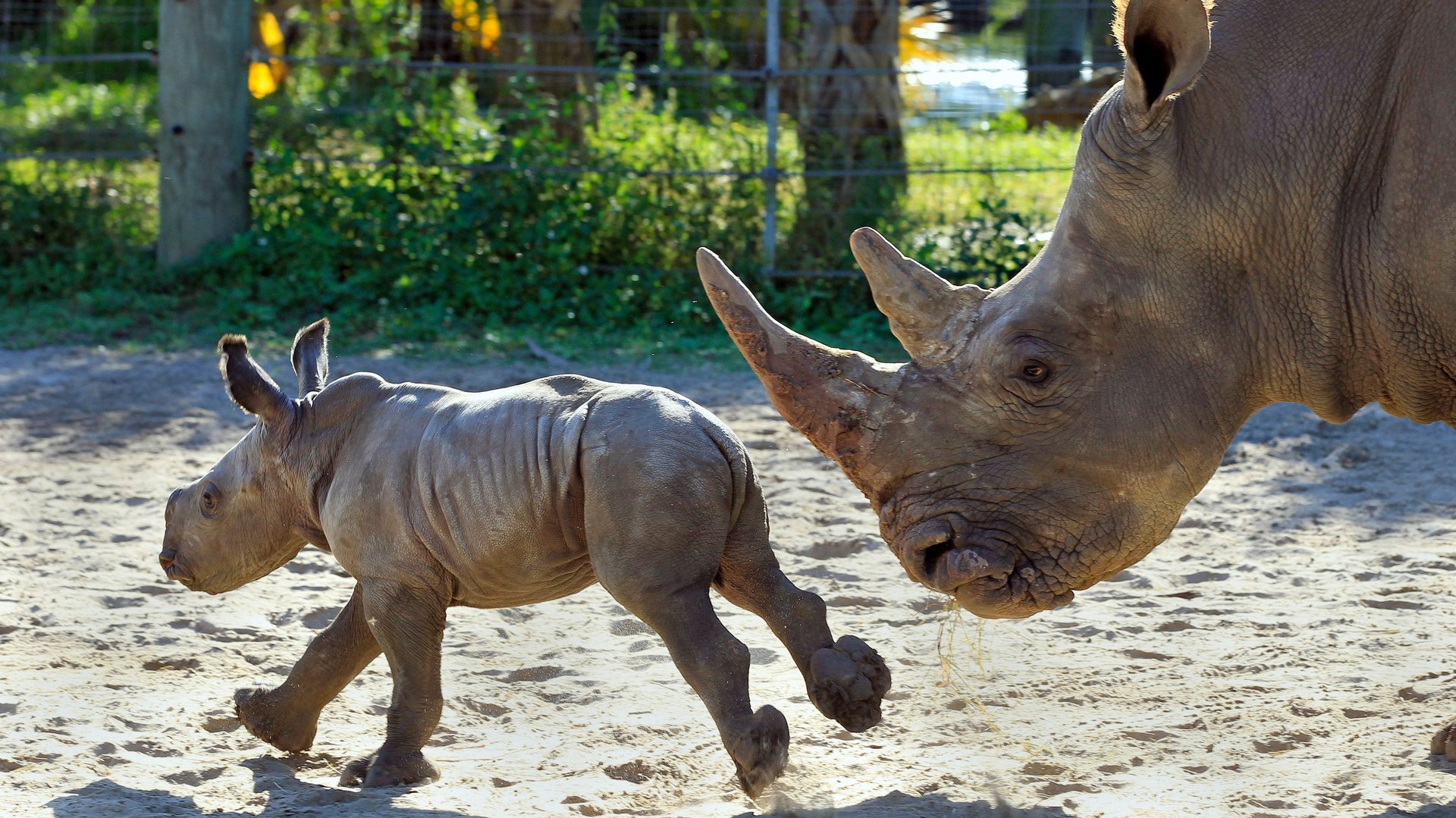The San Diego Zoo is trying to use IVF to save the northern white rhinos
Severe poaching and a dwindling habitat have left Africa’s northern white rhinoceroses on their last legs: The subspecies only has two living females left, and the last male died in March.


Severe poaching and a dwindling habitat have left Africa’s northern white rhinoceroses on their last legs: The subspecies only has two living females left, and the last male died in March.
But don’t lose hope! On Thursday (May 18), the San Diego Zoo announced that one of its captive white rhinos, Victoria, had become pregnant via artificial insemination. While Victoria and her calf are southern white rhinos—a subspecies of much less concern than its northern counterpart—the feat shows for the first time that it’s possible to inseminate rhinos in captivity.
The research team’s eventual goal is to create a herd of roughly 15 northern white rhinos, who can be brought back to their preferred habitat in Africa. To do this, researchers would have to perfect IVF techniques for southern white rhinos, then perform a bit of genetic engineering. Because the biological bank at the San Diego Zoo contains only skin tissue from northern white rhinos, researchers would have to chemically coax these cells to revert back into stem cells, and then redevelop into sperm that could be combined with remaining northern white rhino eggs. Because northern and southern white rhinos are so closely related, the thinking is that southern white rhino moms will be able to carry and deliver northern white rhinos.
Victoria is currently two months into her 16- to 18-month gestation period. Her calf is roughly the size of a AA-battery, but will reach between 55 and 110 lbs (25 to 45 kg) when it’s born. Historically, it has been difficult to get rhinoceroses to breed in captivity, but researchers at the zoo plan to monitor her with weekly ultrasounds to ensure that she and her calf are healthy.